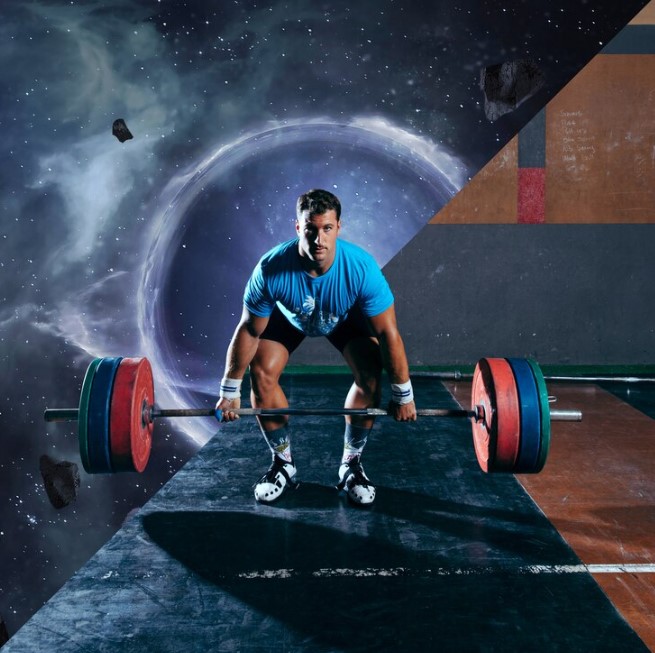Olympic weightlifting showcases the extremes of human strength, agility, and technique. Athletes compete by performing two main lifts: the snatch and the clean and jerk. They push the edges of their physical and mental capacity.
In the following blog post, we delve into the core of Olympic weightlifting. Let’s explore its techniques, training, and the sheer willpower required to succeed.
The snatch
Competitors usually start with the snatch. This lift demands a blend of explosive strength and precise technique as the athlete lifts the barbell from the floor to overhead in one continuous move.
Proper snatch technique involves:
- A wide grip on the bar.
- A swift pull from the floor.
- A rapid drop under the barbell.
- A strong stand-up from the squat position.
Each snatch phase is critical. Athletes often employ accessory exercises like snatch pulls, overhead squats, and drop snatches to refine their technique and improve performance.
Clean and jerk
After the snatch comes the clean and jerk. This lift involves more weight since it is a two-stage action. The lifter first pulls the barbell to the shoulders (the clean) and then thrusts it overhead (the jerk).
The ‘clean’ portion involves lifting the barbell to the shoulders, where the lifter catches it in a front squat position before standing up. The ‘jerk’ propels the bar overhead, challenging the athlete’s coordination and stability.
Training for the clean and jerk often includes front squats, push presses, and jerk drives to enhance the lifter’s explosive power, technical skill, and overall strength.
Training regimen
An Olympic weightlifting training program focuses on building strength, power, and skill. Lifters frequently use periodized training cycles that manipulate volume and intensity over time. The focus is not solely on the main lifts but complementary exercises like squats, deadlifts, and various pulls.
Additionally, plyometric training and mobility work are crucial for developing the speed and flexibility required for successful lifts.
Nutrition and recovery
Nutrition is pivotal in an Olympic weightlifter’s ability to perform and recover. A diet high in protein helps fix muscles, carbs give energy for strenuous workouts, and fats keep hormones in check. Hydration also plays a key role, as even mild dehydration can impair performance.
Recovery methods include massage, stretching, compression garments, and cold water immersion, all reducing muscle soreness and promoting quick recovery.
Mental fortitude
Olympic weightlifting is as mentally demanding as it is physically. Athletes often use psychological techniques such as meditation, imagery, and cognitive restructuring to enhance focus and reduce anxiety.
They also develop routines that create a sense of predictability and control. It can help in high-pressure competition environments. Resilience in the face of failure or setbacks is another crucial mental aspect. It allows lifters to maintain motivation and persist in their long-term goals.
Conclusion
Olympic weightlifting represents the pinnacle of athletic performance. It requires a dedication that transcends the physical aspects of the sport. It moulds individuals who are not only strong in body but also in mind and spirit. Olympic weightlifting promises a rewarding journey that can redefine one’s understanding of personal limits.
If this challenge inspires you, step up to the platform of this majestic sport. Find a qualified coach, join a weightlifting community, and start your journey towards greatness. Embrace the discipline, and perhaps one day, you too can lift among the elites!


Leave a Reply